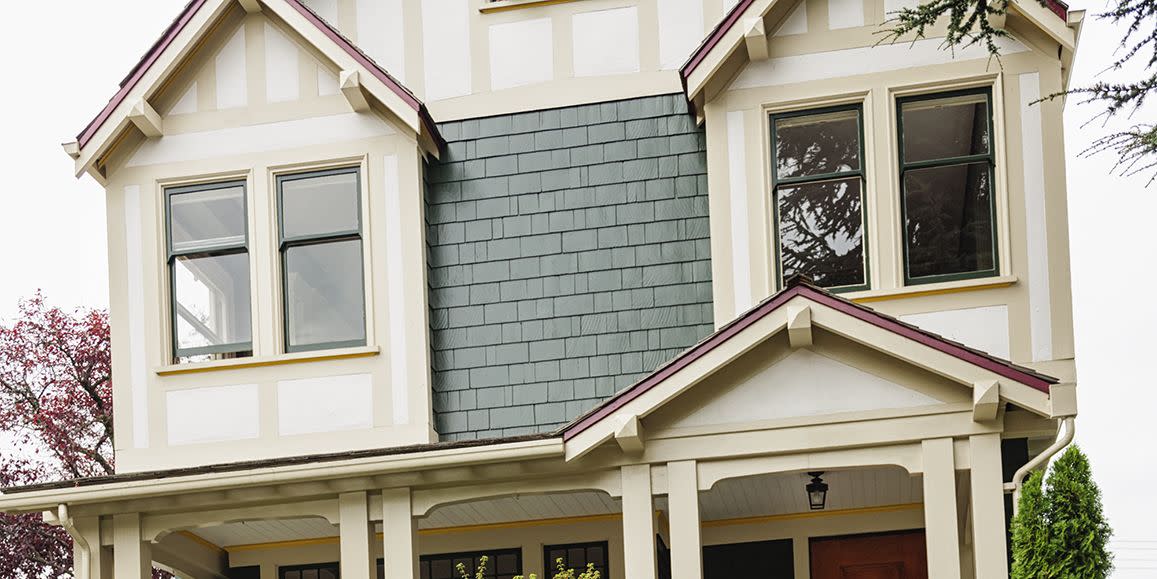The Unseen Side of Home Selling: A Black Designer Shares an Unexpected Hurdle Black Homeowners Face While Selling

Kelly Finley is a designer, founder of Joy Street Design and Joy Street Initiative, and a member of House Beautiful's inaugural Advisory Council. Here, she describes a particular hurdle faced by Black homeowners looking to sell.
“Hi Kelly, I don’t know how to say this, but here it goes: You might want to take some of your art down before we list the property...”
The phone call ended, and I stared blankly at my husband. I’m not one to be speechless, but in that moment, competing thoughts and emotions left me stunned. Outrage. Sadness. Concern. Confusion.
“What did she say?” he asked.
“She said we should think about taking down our art.”
“Our art?”
“The ones that show we’re Black.”
“Oh.”
Yeah. Oh. Unfortunately, I knew which ones she meant. Our 1940s home, which we fully gutted, renovated, and designed over two long years, included artwork depicting a Black woman, statues from Asia, and a few fabric patterns with a tribal twist to them.
Don’t get me wrong — I understand the need to remove personal effects when selling a home. We took our family photos down, and we removed anything that felt like it had been lived in by someone else. I also don’t blame our agent for delivering this message. She wanted us to get the best price for our home, and that’s what experience taught her about the market.
Yet…when I heard that we should remove anything that might show we’re not white, it felt like a punch to the gut. At first, I couldn’t understand why items with culture and history were a symbol of “otherness.” Seeing those pieces and assuming we’re Black is flawed; some people collect art and artifacts from all over the world. Plus, the Bay Area is celebrated for its diversity—couldn’t our home be owned by anyone of any race?
My next thought was, “Wait a second—what does being Black have to do with our home value?” Not only is that unfounded discrimination, but this was a professionally designed home that received national attention. Why should I have to remove its character? Should I take a stand? What example would I be setting for my daughter if I didn’t?
Of course, once the initial emotions passed, logic moved in with its hard numbers. Although we didn’t have proof that taking down the art would impact our sale price, Black discrimination in home appraisals is well documented (with some devaluations as high as $90K), as a New York Times article revealed last year. Appraisals are subjective. With just a pen and an opinion, wealth can be taken away from Black Americans effortlessly. If that’s you and your home is your biggest investment, it’s terrifying.
With these thoughts warring in our minds, my husband and I had a difficult choice to make.
If taking down our personal effects could be the difference between $50K-$100K, we were not willing to risk it. This was our family’s health. This was our future at stake.
We took the art down.
I don’t know if it made a difference, but I do know that my heart felt heavy doing it. I still wonder what would have happened if we had left it. But that’s in the past now. I only hope that by sharing our story — yes, even though it’s anecdotal and there’s no proof — more people will become aware of this secret burden Black Americans and other minorities share. Most of all, I hope we can have these hard conversations with respect and community, because whether you’re Black or not, inequality deeply affects everyone in society. We all deserve to live with joy, not fear.
Fortunately, our story does have a happy ending. A day after listing our Oakland home, we sold it to another great Bay Area family. We already have a positive relationship with the new homeowners, and they even asked if we could sell them some of our bold, joyful furniture!
Oh, yes, we can.
Follow House Beautiful on Instagram.
You Might Also Like


